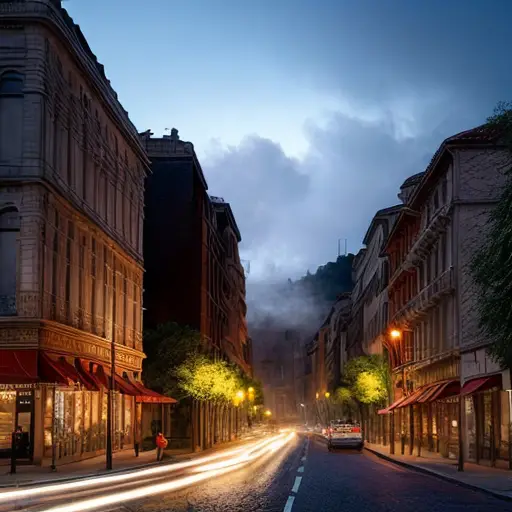Alright, picture this: it's the early 20th century, and the art world is about to get a serious makeover. Enter Pablo Picasso and Georges Braque, the dynamic duo of the art scene. These two mischievous minds decided to team up and create a style of painting that would make everyone's heads spin faster than a cubist masterpiece. And voila, Cubism was born! With their revolutionary artistic collaboration, Picasso and Braque shattered the traditional notions of perspective and reality, leaving us all scratching our heads and wondering if we accidentally stumbled into a Picasso-themed funhouse. But hey, who needs a clear view of the world when you can have fragmented shapes and mind-bending perspectives? These guys sure knew how to keep us on our toes!
Pablo Picasso and Georges Braque are credited with creating the art movement known as Cubism. This revolutionary style of painting, developed in the early 20th century, sought to depict objects from multiple viewpoints, breaking them down into geometric shapes and fragments. Cubism challenged traditional notions of perspective and representation, paving the way for abstract art and influencing countless artists in the years to come.
Prepare to have your mind blown, folks! Let's dive into the origins and influences of Picasso and Braque's mind-boggling Cubist style. These artistic rebels were tired of the same old, same old, so they decided to break the mold and create a whole new way of seeing the world. Inspired by African and Iberian art, as well as the works of Cézanne, these two trailblazers turned the art scene upside down with their fragmented forms and multiple perspectives. They took reality, chopped it up into little pieces, and rearranged it like a Picasso puzzle. Who needs a single viewpoint when you can have a kaleidoscope of angles and dimensions? Picasso and Braque were the masters of defying expectations and challenging our perception of reality. So, grab your art goggles and get ready to have your mind twisted into a Cubist pretzel!

Prepare to have your reality shattered, my friends, as we delve into the mesmerizing world of Analytical Cubism, brought to you by the artistic geniuses Pablo Picasso and Georges Braque. These two visionaries took the art scene by storm, deconstructing reality like a master architect tearing down a building. With their revolutionary style of painting, they dissected objects and subjects into geometric shapes, reducing them to their basic forms. No longer bound by the constraints of traditional perspective, Picasso and Braque shattered the illusion of a single viewpoint, presenting multiple angles and perspectives simultaneously.
In their quest to challenge our perception, Picasso and Braque embraced a monochromatic palette, using shades of gray and earth tones to strip away the distractions of color. This allowed the viewer to focus solely on the structure and composition of their mind-bending creations. The result? A visual puzzle that required the viewer to piece together the fragmented elements to decipher the subject matter. It was like trying to solve a Rubik's Cube, but with paint and canvas.
Analytical Cubism was not just a style of painting; it was a philosophical approach to art. Picasso and Braque aimed to break down the barriers between art and reality, blurring the lines between the two. By challenging our preconceived notions of what art should be, they opened up a whole new world of possibilities. They invited us to question the very nature of representation and to embrace the chaos and complexity of the world around us.
So, next time you find yourself staring at a Picasso or Braque masterpiece, prepare to have your mind twisted and turned. Analytical Cubism is not for the faint of heart. It's a journey into the depths of perception, where reality is shattered and reconstructed in a mesmerizing dance of shapes and forms. Brace yourself, my friends, for a wild ride through the deconstructed wonderland of Picasso and Braque's Analytical Cubism.
Pablo Picasso and Georges Braque created the style of painting known as Cubism, which revolutionized the art world by breaking down objects into geometric shapes and depicting multiple perspectives simultaneously.
Hold on tight, art enthusiasts, because we're about to dive into the captivating world of Synthetic Cubism, a groundbreaking style of painting brought to life by the dynamic duo, Pablo Picasso and Georges Braque. Building upon the foundations of Analytical Cubism, these artistic pioneers took things to a whole new level by introducing collage and assemblage into their works. They shattered the boundaries of traditional painting by incorporating real-life objects, such as newspaper clippings, fabric, and even everyday items, onto their canvases. Picasso and Braque transformed the act of painting into a three-dimensional experience, blurring the lines between art and life. With their innovative approach, they challenged our perception of reality and created a visual language that continues to inspire and amaze us to this day. So, get ready to be captivated by the mesmerizing world of Synthetic Cubism, where art and everyday objects collide in a harmonious and thought-provoking dance.